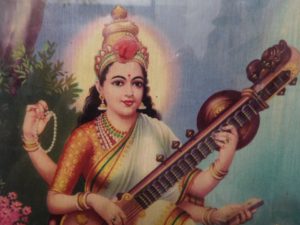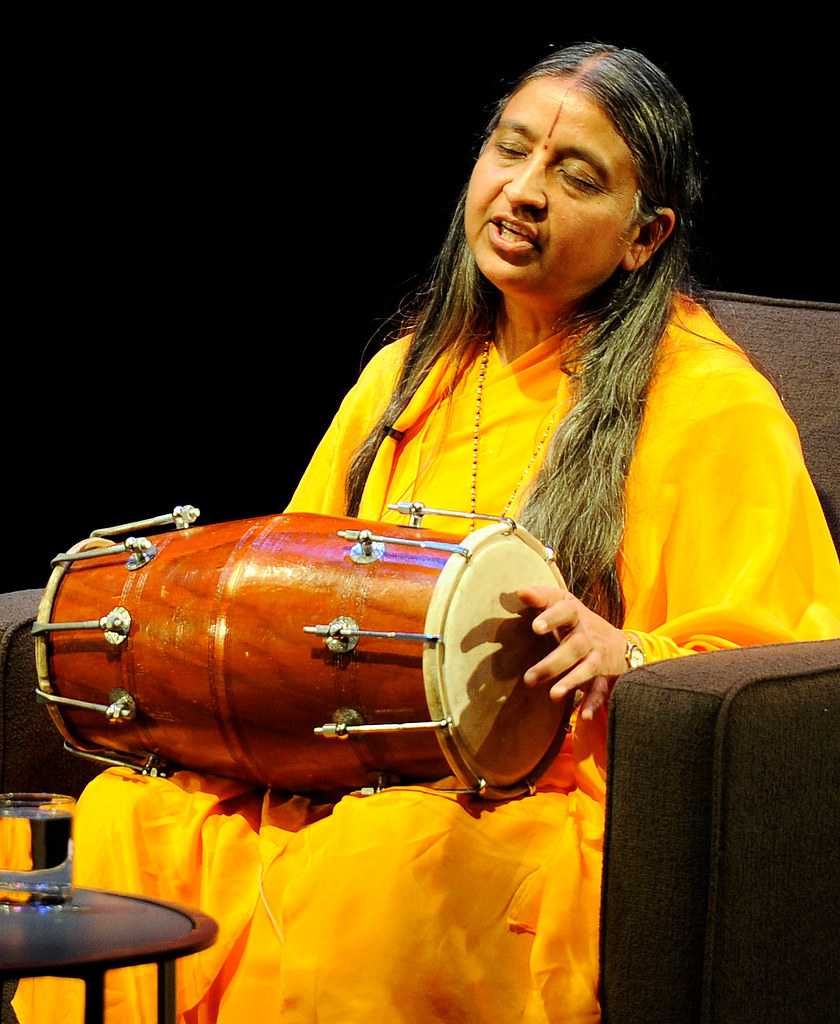Hindu culture has a rich and vast heritage of a variety of music forms of which devotional and classical music are most prominent. In true sense, Hindu music -‘Sangeet’ in its purest form is believed to have a spiritual effect and to influence and mesmerize not only the heart but the soul as well.
Indian classical music can be categorized into two genres, mainly Hindustani and Carnatic music. Which are further divided into instrumental and vocal forms? Vocal comprises of ‘ragas’ – musical melodies chanted by singers.
Hindu Classical Music is of following types:
1) Dhrupad Dhamar
The word Dhrupad is derived from Dhruva meaning pole-star and pada meaning poetry.
In nature Dhrupad is spiritual. Seeking not to entertain, but to induce feelings of peace and contemplation in the listener. This composition has four parts or ‘varnas’, viz. Asthayi – refers to halting at a single note, Antra – Second section of a raga register above and including upper tonic, Sanchari – mixed upward and downward movement and Abhog – Sums up the entire development of a raga.
2) Classical Khayal
Unlike Dhrupad, Khayal is romantic and full of thoughts as the word Khayal itself means imagination or idea. The most important features of a Khayal are ‘Tans’ or the
running glides over notes and ‘Bol-tans’. The slow or paused (Vilambit) and fast (Dhrut) styles of Khayal are the two recognized types today.
3) Semiclassical music (Natya sangeet – Music with Dance)
Thumri is very distinct from other forms and is accompanied by dance and is more expressive in emotions and love, originated from Uttar pradesh represents the events in the lives of Lord Krishna and Radha. The beauty of Thumri lies in the artist’s ability to convey musically as many shades of meaning as the words of a song can bear
4) Light Music ( Bhajans, Kirtans and aarti songs )
This devotional music is basically in forms of ‘bhajans'(chants) or ‘aarti'(prayers) and is mainly focused to lose oneself and bring out the soul near to God. It’s performed as a solo or by Groups in temples or religious places
5) Instrumental
This is a purely instrumental form of music and is played on instruments like sitar, sarod, veena, tabla, etc.
Few important terms in Hindu Classical music:
Swara – It is a notation followed in ragas. There are in total seven Swara viz Sa, Re, Ga, Ma, Pa, Dha and Ni
Tal – Tal is the Rhythm prevalent in music and can have 3 to 108 beats per cycle.
Sur – is the pitch or tone of swaras and music
 Ragas – Raga literally means color and are colored by human emotions and moods ‘rasa’ and are associated with a particular time of day or season. These are the melodic structures and forms the basis for music composition. A raga has five, six or seven notes in separate ascending and descending structures. Each raga has a distinct structure and associated with human emotions ‘rasa’ for e.g pathos or sadness, joy, romance, love, devotion and the like, which are reflected in the ragas.
Ragas – Raga literally means color and are colored by human emotions and moods ‘rasa’ and are associated with a particular time of day or season. These are the melodic structures and forms the basis for music composition. A raga has five, six or seven notes in separate ascending and descending structures. Each raga has a distinct structure and associated with human emotions ‘rasa’ for e.g pathos or sadness, joy, romance, love, devotion and the like, which are reflected in the ragas.
There are morning ragas like Bhairavi, Lalit, Todi, and its variations. Similarly, there are afternoon ragas, such as Sarang and Bhimpalsi and the evening ragas include Yaman, Pooriya, Marwa, and Shree.
In the same way, there are ragas associated with seven seasons such as Basant for the Spring, Hemant for the Autumn, Malhar for Rain and so on.
Melas – There are 72 ‘melas’, or parent scales, on which Ragas are based.
Though it’s a very short introduction to Hindu music however, there is much to know and learn about Hindu music. Like other forms of music, it takes years of practice (Riyaz) to bring perfection in Hindu classical music.
As the world is getting converged, Like other Cultural music forms, Hindu music is also not escaped from the tactics of commercial industry, Re-Mixes, and influence from other cultures. However, there are strong initiatives taken by Government, music lovers, and Quality listeners to protect and spread originality, charm, and heritage of Hindu Classical music. There is an ever-increasing interest and enrollment in Indian Music Universities (Gharanas) not only from India but from European and western countries too. As of day, Hindu classical music is survived by a huge fan following and disciples all over the world.






